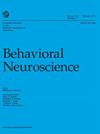Are observed effects of movement simulated during motor imagery performance?
IF 1.6
4区 医学
Q3 BEHAVIORAL SCIENCES
引用次数: 2
Abstract
Motor learning relies on adjusting the performance of movements via error detection and correction. How motor learning proceeds via motor imagery, the imagination of movement, is not understood. Motor imagery-based learning is thought to rely on comparing the predicted effect of movement, resulting from the forward model, against its intended effect. Whether motor imagery-based learning uses the observed effect of movement, simulated in motor imagery, to make comparisons to the intended effect to permit error detection and correction, is an open question. To address this, transcranial magnetic stimulation was used to inhibit the left inferior parietal lobe (L_IPL) after each trial of a task requiring participants to reproduce complex trajectories via motor imagery. From past work, we speculated the L_IPL was a candidate for integrating simulated feedback about task performance (simulated observed effects), hypothesizing inhibition of the L_IPL would impair learning, suggesting simulated observed effects of movement are used in motor imagery-based learning. Participants received stimulation to the L_IPL or over the vertex of the head after each trial. Learning was defined as reduced error on a repeated trajectory in comparison to randomly generated trajectories. Regardless of group participants learned, a finding countering our hypothesis, suggesting (a) observed effects of movement are not simulated in motor imagery; (b) the L_IPL is not involved in integrating simulated observed effects of movement; or (c) the timing of the stimulation did not align with the speculated role of the L_IPL. Results encourage further research probing simulated feedback in motor imagery and its neural correlates. (PsycInfo Database Record (c) 2022 APA, all rights reserved).在运动图像表现过程中,观察到的运动效果是否模拟?
运动学习依赖于通过错误检测和纠正来调整运动的表现。运动学习是如何通过运动意象,即对运动的想象来进行的,目前还不清楚。基于运动图像的学习被认为依赖于将前向模型产生的运动的预测效果与其预期效果进行比较。基于运动图像的学习是否使用在运动图像中模拟的观察到的运动效果来与预期效果进行比较,以允许错误检测和纠正,这是一个悬而未决的问题。为了解决这一问题,在每次要求参与者通过运动图像再现复杂轨迹的任务试验后,都使用经颅磁刺激来抑制左下顶叶(L_IPL)。根据过去的工作,我们推测L_IPL是整合关于任务表现的模拟反馈(模拟观察效果)的候选者,假设L_IPL的抑制会损害学习,这表明模拟观察到的运动效果用于基于运动图像的学习。每次试验后,参与者接受L_IPL或头顶的刺激。学习被定义为与随机生成的轨迹相比,重复轨迹上的误差减少。无论小组参与者学习了什么,这一发现都与我们的假设相反,表明(a)运动图像中没有模拟观察到的运动效果;(b) L_ IPL不参与整合模拟观察到的运动效果;或(c)刺激的时间与L_ IPL的推测作用不一致。研究结果鼓励进一步研究运动图像中的模拟反馈及其神经相关性。(PsycInfo数据库记录(c)2022 APA,保留所有权利)。
本文章由计算机程序翻译,如有差异,请以英文原文为准。
求助全文
约1分钟内获得全文
求助全文
来源期刊

Behavioral neuroscience
医学-行为科学
CiteScore
3.40
自引率
0.00%
发文量
51
审稿时长
6-12 weeks
期刊介绍:
Behavioral Neuroscience publishes original research articles as well as reviews in the broad field of the neural bases of behavior.
 求助内容:
求助内容: 应助结果提醒方式:
应助结果提醒方式:


